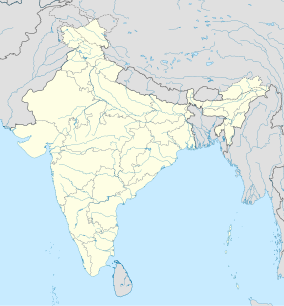National Chambal Sanctuary
| National Chambal Sanctuary | |
|---|---|
| National Chambal Gharial Wildlife Sanctuary | |
Dhaulpur | |
| Location | Madhya Pradesh, India |
| Nearest city | Morena 30 km (19 mi), Agra 70 km (43 mi), Etawah 50 km (31 mi) |
| Coordinates | 26°46′06″N 78°38′40″E / 26.7681981°N 78.6445791°E |
| Established | 1979 |
| Governing body | Uttar Pradesh Forest Department[1] |
| Website | https://nationalchambalsanctuary.in/ |
National Chambal Sanctuary, also called the National Chambal Gharial Wildlife Sanctuary, is a 5,400 km2 (2,100 sq mi) tri-state
It is part of the
History
Administrative approval of the Government of India for the establishment of the National Chambal Sanctuary was conveyed in Order No. 17-74/77-FRY (WL) dated 30 September 1978. The Sanctuary has sanctuary status declared under Section 18(1) of the
The sanctuary is protected under India's Wildlife Protection Act of 1972. The sanctuary is administered by the Department of Forest under the Project Officer with headquarters at Morena, Madhya Pradesh.
Fauna




The
Mammals of less concern which live here include:
The National Chambal Sanctuary is listed as an
Flora
Common plants in the sanctuary include khair (
Conservation management
The sanctuary is protected under India's Wildlife Protection Act of 1972. The sanctuary is administered by the Department of Forest under the Project Officer with headquarter at Morena, Madhya Pradesh.
Parts of the sanctuary are threatened by extensive

On 27 December 2010, the Minister for Environment and Forests,
Visitor activities
There are many nature watching opportunities available for visitors to the National Chambal Sanctuary. The best opportunities for sighting and photography of gharial and dolphins can be had by hiring a boat with a driver and guide, available at several points along the river. A boat excursion will also offer many viewpoints for photography of water and shore birds and landscapes. Walking trails in the ravines and along the river offer opportunities for close observation of the wide variety of plants and animals in the sanctuary.[1]
There are public vehicle entry points to Chambal Sanctuary at Pinahat, Nandagon Ghat, Sehson and Bharch. Boating and visiting arrangements can be made with the help of the office of the Conservator of Forests, at Kota.[9]
Visitors may explore
There are forest rest houses at Bah and Chakkar Nagar and Public Works Department inspection bungalows at Bah and Pinahat. There are several commercial hotels and eco lodges at Agra, Etawah and Bah.[1] The nearest airport is at Agra. The nearest railway station is at Agra. Agra and
See also
- Etawah Safari Park
- Arid Forest Research Institute (AFRI)
- Darrah National Park
References
- ^ a b c d e "National Chambal Sanctuary". Wildlife wing of the Uttar Pradesh Forest Department. Retrieved 28 December 2010.
- ^ "Khathiar-Gir Dry Deciduous Forests". Terrestrial Ecoregions. World Wildlife Fund. Retrieved 13 February 2017.
- ^ Sale J.B. 1982. 2nd Draft. Management Plan For The National Chambal Sanctuary. First Five Year Period 1982/83 - 1986/87. Central Crocodile Breeding and Management Institute, Hyderabad.
- ^ a b "Reptiles & Mammals, Checklist of National Chambal Sanctuary". Wildlife wing of the Uttar Pradesh Forest Department. Retrieved 28 December 2010.
- ^ "IN122 National Chambal Wildlife Sanctuary (Agra/Etawah)". Sites - Important Bird Areas (IBAs). BirdLife International. Retrieved 29 December 2010.
- ^ "National Chambal Sanctuary". Birds of India. Kolkata Birds. Retrieved 29 December 2010.
- ^ Lenin, Janaki (27 December 2010). "New Government of India initiative for gharial conservation". Janaki Lenin's Facebook Notes. Madras Crocodile Bank, Chennai, India.
- ^ Oppilli, P. (27 December 2010). "A sanctuary Coming Up for Ghariyals". S & T, ENERGY & ENVIRONMENT. The Hindu, Chennai. Retrieved 27 December 2010.
- ^ a b "Maps of National Chambal Sanctuary". Wildlife wing of the Uttar Pradesh Forest Department. Retrieved 28 December 2010.


